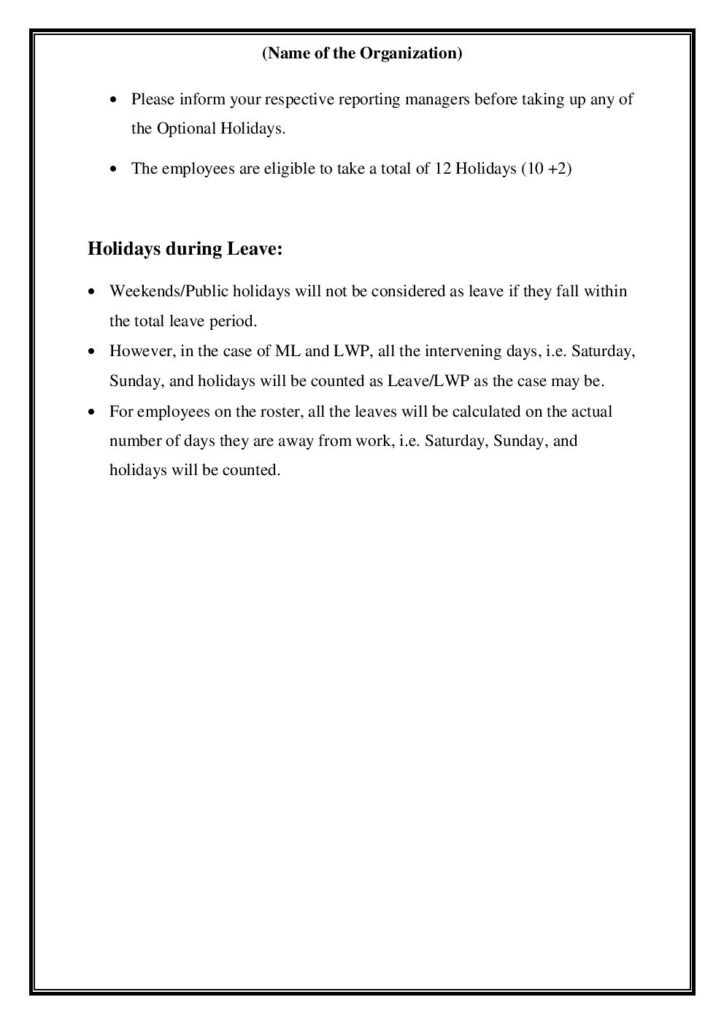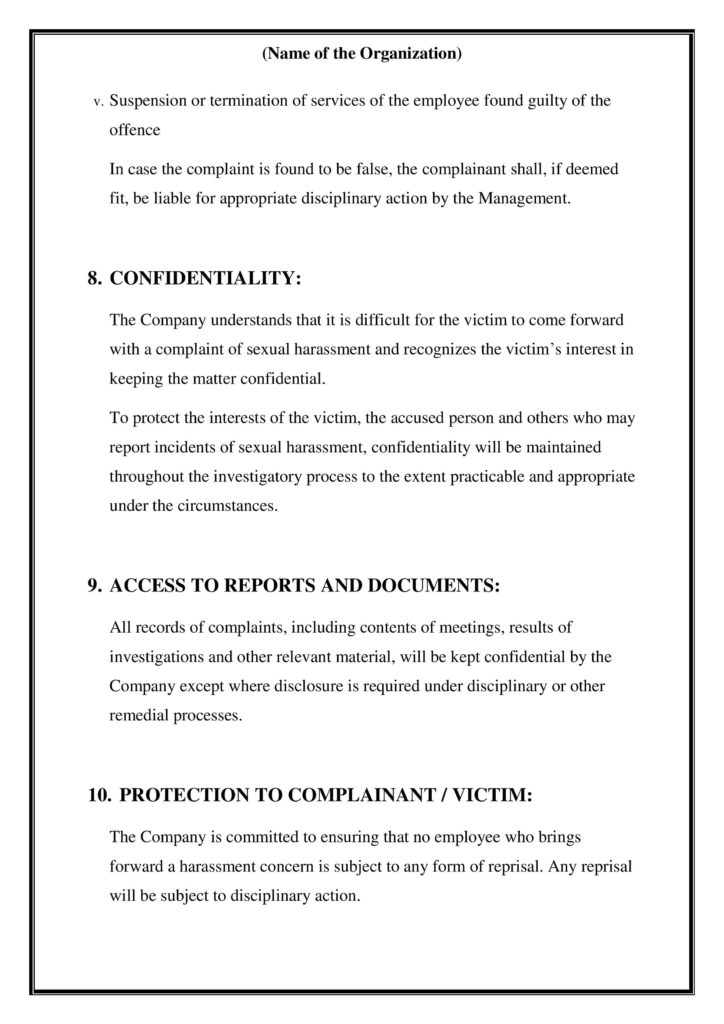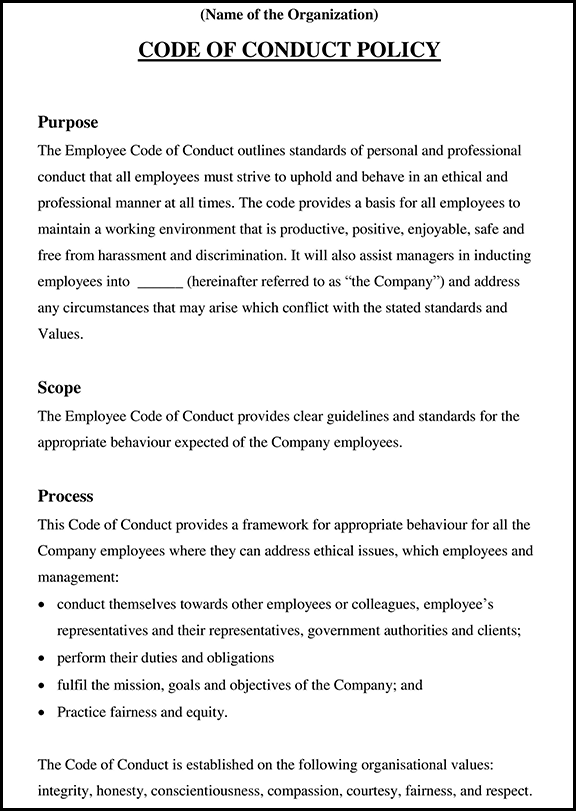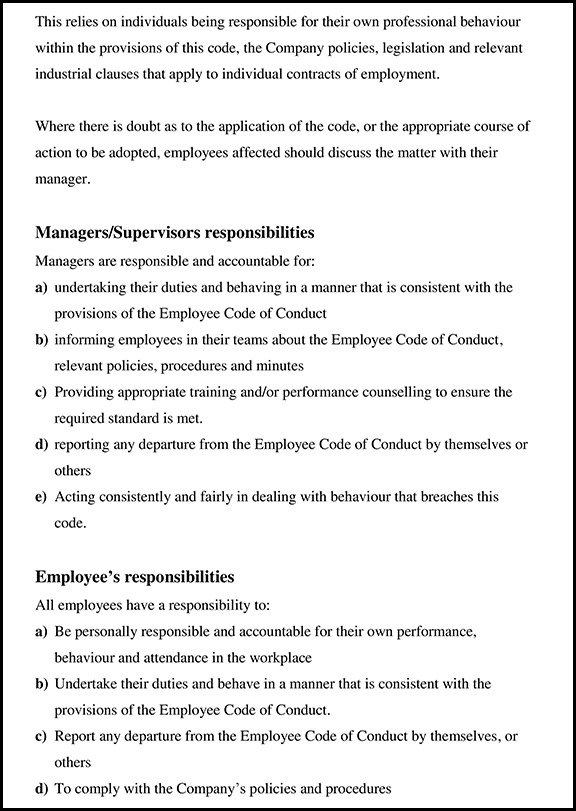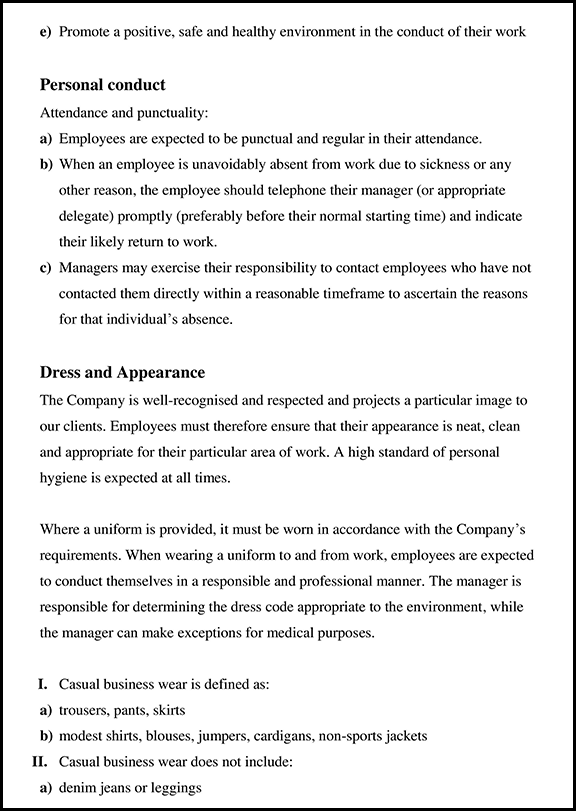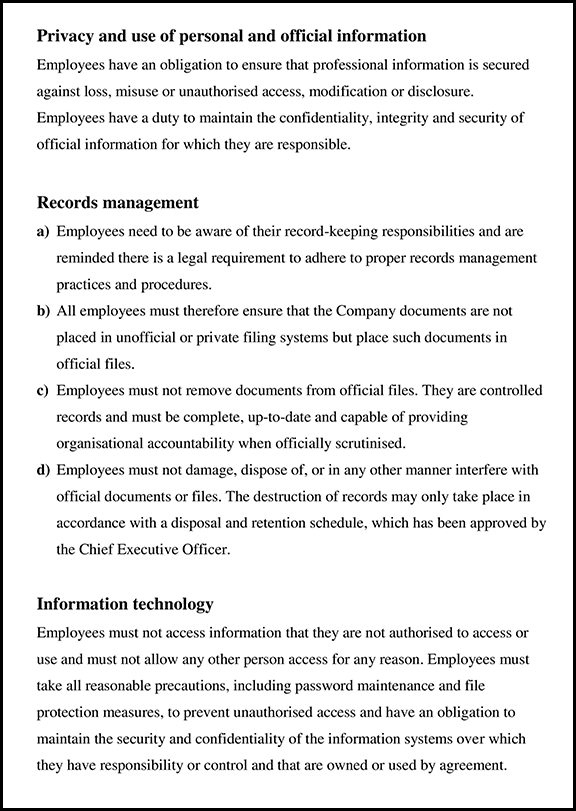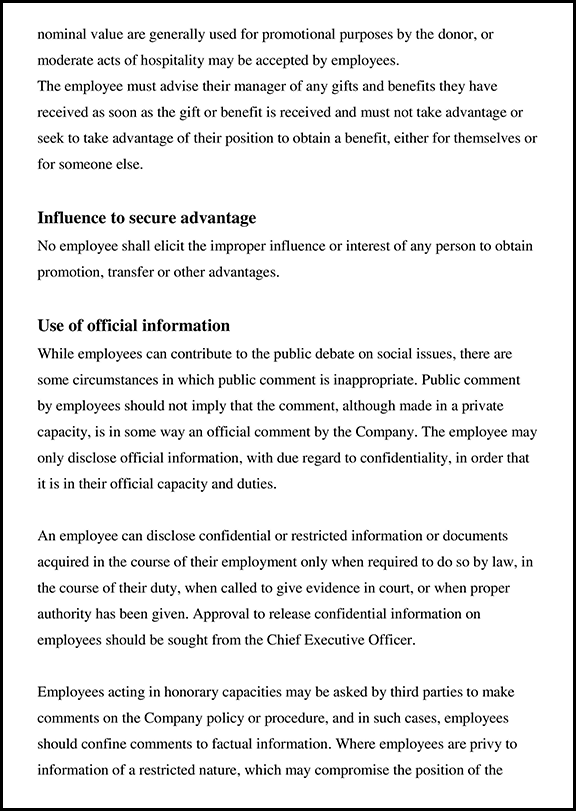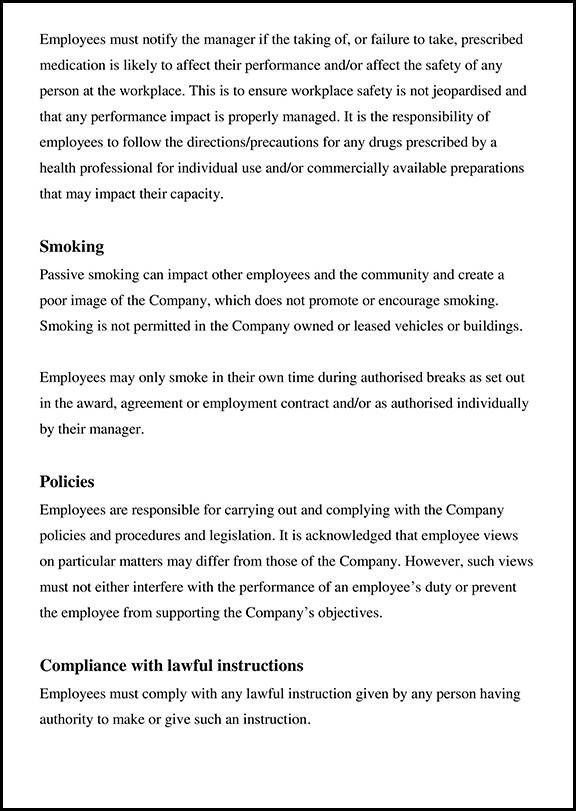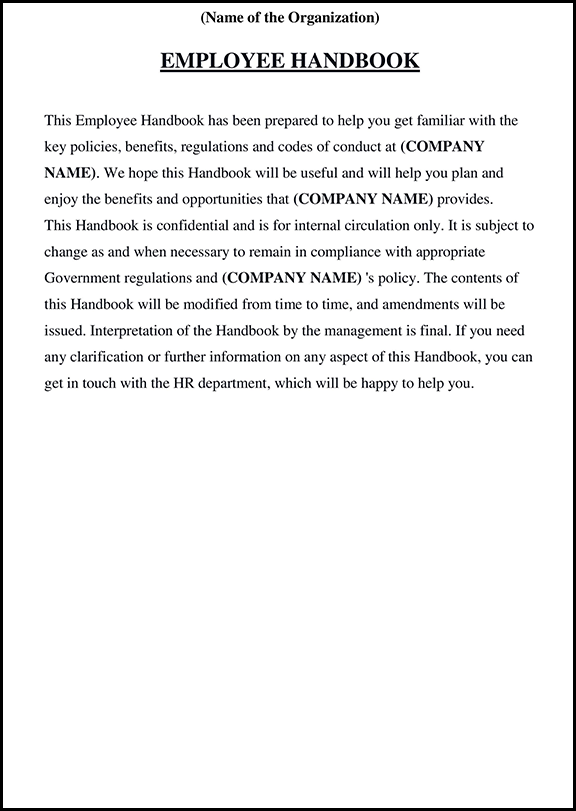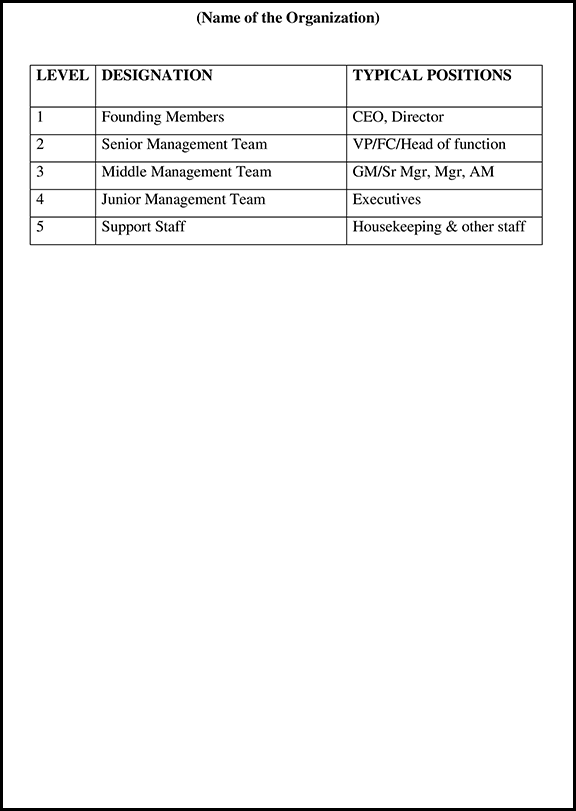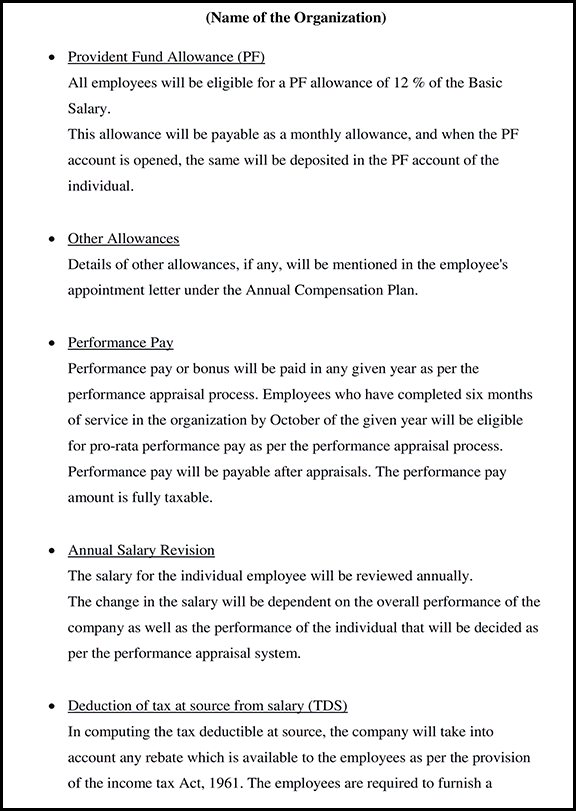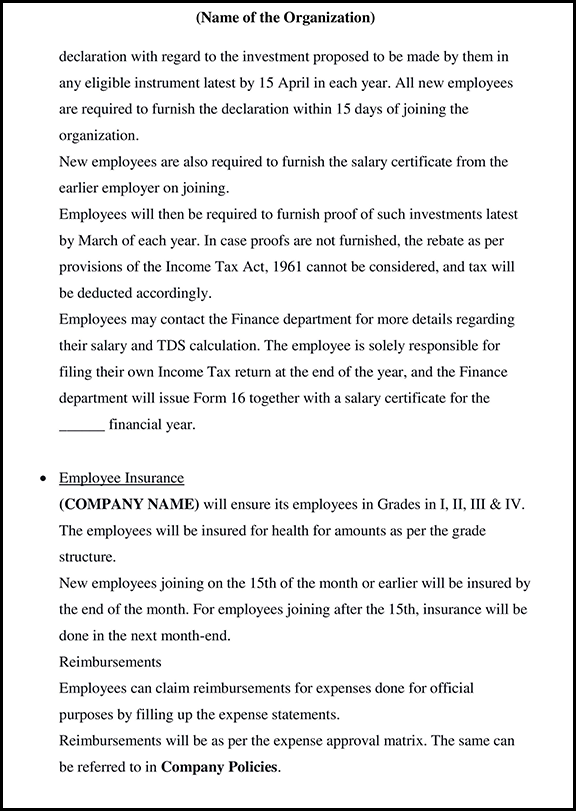
Health and Safety Policy
Health and Safety Policy Template
What is Health and Safety Policy?
A Health and Safety Policy is a form that defines an organization’s commitment to maintaining a safe and healthy environment for its employees, buyers, and visitors. It establishes guidelines and procedures to identify and control hazards, promote safety awareness, and comply with relevant laws and regulations. The policy typically includes responsibilities, reporting procedures, emergency protocols, and training requirements. By implementing a robust Health and Safety Policy, organizations aim to prevent accidents and injuries, protect individuals’ well-being, and foster a culture of safety throughout the organization.
StartupHR Toolkit helps to create a Health and Safety Policy easily; you just have to mention your details, and that’s it. In addition, you get 3500+ HR documents that include legally compliant updated HR policies.
Objectives of a Health and Safety Policy
1. Preventing accidents, injuries, and illnesses in the workplace.
2. Ensuring compliance with health and safety laws and regulations.
3. Promoting a culture of safety and accountability among employees.
4. Regular review and evaluation.
5. Reducing absenteeism and improving productivity.
Why Health and Safety is important
A Health and Safety Policy is Essential for Several Reasons:
1. Setting Guidelines and Expectations
The policy outlines the organization’s expectations regarding health and safety practices. It establishes guidelines and procedures for identifying and managing hazards, reporting incidents, and ensuring compliance with relevant laws and regulations. This helps create a structured approach to maintaining a safe environment.
2. Creating a Safe Work Culture
A Health and Safety Policy promotes a culture of safety within the organization. It helps foster awareness and accountability among employees, encouraging them to prioritize their own safety and that of others. A strong safety culture leads to increased vigilance, proactive hazard identification, and a collective commitment to maintaining a safe workplace.
3. Reduced Absenteeism and Turnover
A safe and healthy work environment helps reduce workplace injuries and illnesses. This, in turn, can lead to lower absenteeism and turnover rates. When employees are healthy and feel secure, they are more likely to be present at work, leading to increased productivity and continuity in operations.
4. Compliance with Industry Standards
Many industries have specific health and safety standards and certifications that organizations must adhere to. A well-defined Health and Safety Policy ensures that the organization meets these industry-specific requirements and maintains a competitive edge.
5. Creating a Safe Work Culture
A Health and Safety Policy promotes a culture of safety within the organization. It helps foster awareness and accountability among employees, encouraging them to prioritize their own safety and that of others. A strong safety culture leads to increased vigilance, proactive hazard identification, and a collective commitment to maintaining a safe workplace.
6. Legal and Regulatory Compliance
A Health and Safety Policy makes sure that the organization meets legal and regulatory requirements pertaining to health and safety. It helps the organization understand its obligations, implement necessary measures, and maintain compliance. Compliance with health and safety laws is not only a legal requirement but also protects the organization from legal liabilities and penalties.
How to Write Health and Safety Policy Structure
When writing a Health and Safety Policy, it’s important to structure it in a clear and organized manner.
Here’s a suggested structure you can follow:
1. Policy Statement
- Begin with a concise and impactful statement demonstrating the organization’s commitment to health and safety.
- Clearly state the purpose of the policy and its overall objectives.
- Include a statement about compliance with relevant laws, regulations, and industry standards.
2. Scope and Applicability
- Define the scope of the policy, specifying which areas, activities, and individuals it applies to (e.g., all employees, contractors, visitors).
- Clearly state any exclusions or specific limitations, if applicable.
3. Responsibilities
- Outline the responsibilities of key individuals or positions within the organization regarding health and safety.
- Specify the roles and duties of management, supervisors, employees, and any designated safety personnel.
- Emphasize the importance of individual accountability and adherence to safety practices.
4. Hazard Identification and Risk Assessment
- Describe the process for identifying and assessing hazards within the organization.
- Explain how risk assessments are conducted, including the methods used and the frequency of assessments.
- Highlight the importance of regular hazard identification and risk review processes.
5. Incident Reporting and Investigation
- Establish procedures for reporting accidents, incidents, near-misses, and unsafe conditions.
- Describe the process for investigating incidents to determine root causes and implement corrective actions.
- Specify the channels and individuals responsible for reporting and investigating incidents.
6. Review and Revision
- Highlight the importance of regular policy review and revision to ensure its effectiveness and relevance.
- Specify the frequency of reviews and the process for making updates or amendments.
- Encourage feedback from employees and stakeholders for continuous improvement.
7. Communication and Implementation
- Outline the organization’s approach to communicating the Health and Safety Policy to all relevant parties.
- Specify the channels and methods of communication (e.g., meetings, training sessions, intranet).
- Emphasize the importance of individual compliance and adherence to the policy’s provisions.
Download Full Version
Created by India’s top HR experts
Just Rs. 999 Rs. 499
How To Use?
Fill In The Blanks
 Customize Template
Customize Template
 Save, Print, Done.
Save, Print, Done.

Download Health and Safety Policy.
→ Editable in MS Word & Google Docs
→ Full Version
→ Created by India’s Top HR Experts
→ Used by HR professionals at Dream11, Razorpay, Mamaerath & more
Rs. 999 Rs. 499
Download StartupHR Toolkit Instantly & Access Largest Collection HR Documents.
The only Toolkit to solve all your HR problems in minutes.
Legally compliant and govt approved HR documents.
24×7 customer support over chat & calls (during daytime).
FREE HR audit.
Up to date documents as per the latest Statutory Law.
3 FREE customized documents with Gold Plan.
Expert HR guidance.
Join a Community of 1,00,000+ HR Professionals
Recent Post

Employee Non Disclosure Agreement Format
All organizations have specific information and processes that they want to keep confidential as they are too sensitive. To ensure that they remain a secret, employers make their employees sign an Employee Non Disclosure Agreement format.
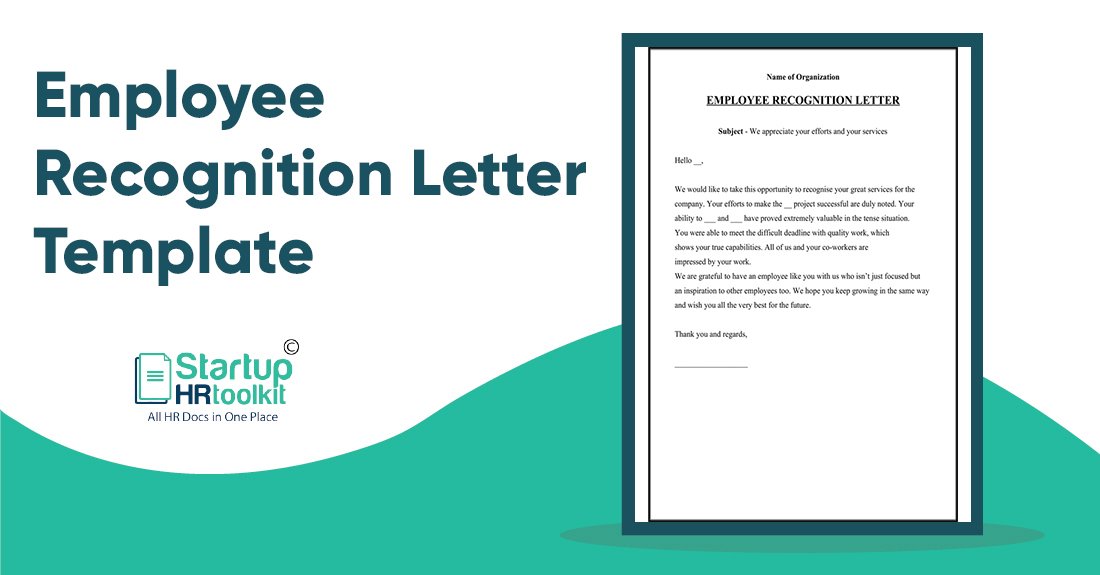
Employee Recognition Letter
An employee recognition letter is a means for employers to thank and appreciate employees for all their hard work and dedication. This letter aims to show and appreciate them for putting in a lot of effort in their job. It motivates them to work harder and achieve all their targets.

Relieving Letter After Resignation
A relieving letter sample is provided to employees when they leave an organization. The Letter states that the employee left their previous employment after a full and final settlement and now join a new organization.
















